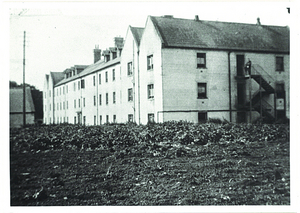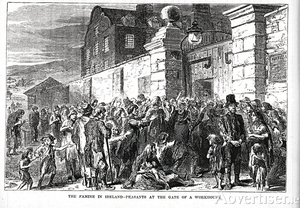Search Results for 'Poverty in the United Kingdom'
12 results found.
The changing face of poverty

Having a job is no longer a guarantee that you will stay out of poverty. You may be working in a low paid position, have a zero hour contract, or a part-time post. Or you may earn what appears on paper to be a reasonable income but have very high outgoings in terms of rent or childcare. You may be struggling financially from week-to-week with no real chance of ever getting your finances on an even keel.
The Galway Workhouse

The first formal meeting of the Board of Guardians of the Galway Workhouse took place in the Town Hall on July 3, 1839, and the building opened on March 2, 1842, one of many such workhouses built around the country. On March 16, the first pauper died from old age and destitution. The numbers of inmates gradually increased to 313 by May 1845, after which the Famine made a huge impact on the project. It was originally designed for 800 destitute persons but this quickly increased to 1,000. Included in the complex was an infirmary for sick paupers but this rapidly became the hospital for the city’s poor.
Mayo Library puts workhouse records online

The workhouse has been described as “the most feared and hated institution ever established in Ireland" and the story of these institutions has now been made available online by Mayo County Library.
Almost 18,000 visitors this year to Portumna Workhouse very encouraging for 2019, says Cannon
An East Galway TD has welcomed the fact that almost 18,000 people visited the Irish Workhouse Centre in 2018.
Getting rid of the troublesome women

One of the remedies in dealing with overcrowding, and rebellious behaviour from frustrated and angry women in the workhouses during the famine years, was assisted emigration. This was done on a massive scale. Between 1848 and 1850, 4,175 women were sent direct from the workhouse system to Australia. This was in addition to the thousands already sent away assisted by landlords and other schemes to clear the land of unproductive tenants. The only cost to the individual Poor Law unions was for new clothes, and travel expenses to Plymouth, from where the girls embarked to the colony.
The Central Hospital

“The newly constituted County Hospitals and Dispensary Committee met for the first time on the 25th of February, 1922, in the boardroom of the old gate lodge of the old workhouse to organise the transfer of the Galway Hospital (Infirmary) on Prospect Hill to the workhouse site.” The hospital (which was where the county council buildings are today) had come under the control of the county council the previous year and it wisely decided that it should be closed and the workhouse developed as a central hospital to serve city and county. The Prospect Hill unit was phased out and ultimately closed in December 1924.
'It was Christmas day in the workhouse..'
It is Christmas Day in the workhouse,



